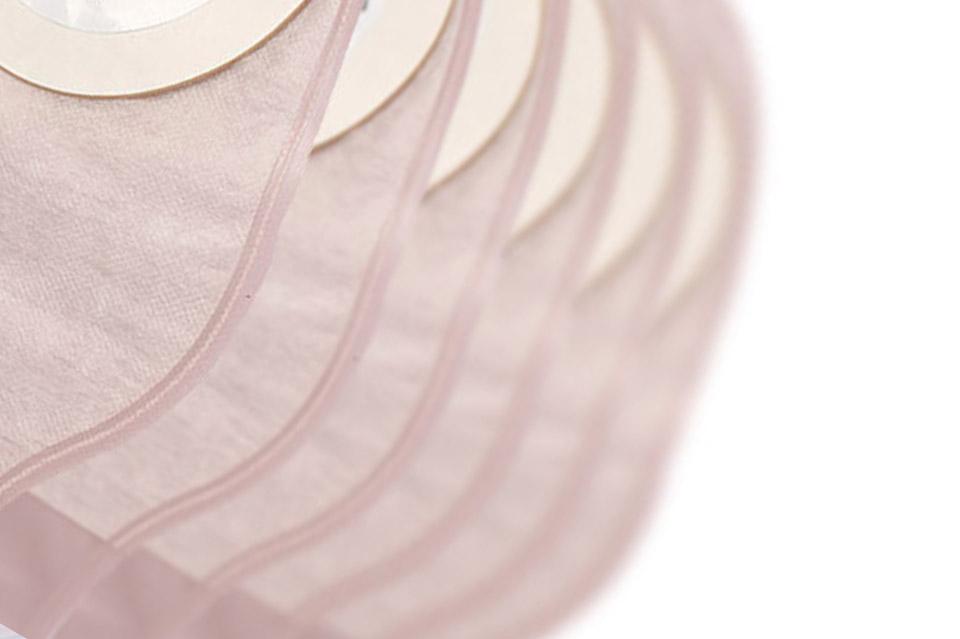From time to time stoma patients may experience stoma problems. The majority of these issues are not serious and can be resolved relatively quickly by adjusting part of your routine, swapping to a new product or altering your diet slightly. Some of the most common stoma complications are listed below. If you are experiencing any issues with your stoma, it is best to seek advice from your Stoma Nurse or Colorectal Nurse Specialist.
What are the Most Common Stoma Complications?
The more common complications Ostomates might face are listed below. In this post we go into more detail on the following topics:
- Skin Problems and Irritations
- Stoma Leaks and how to avoid them
- Bleeding – when to get help
- Retracted or Prolapsed Stoma
- Parastomal Hernia
- Blockages or Bowel Obstruction
Living with a stoma can cause additional hygiene and care needs when using a toilet. You may wish to carry a toilet card, designed for people living with a bladder or bowel condition who may need to access a toilet at short notice, to deal with any complications quickly and efficiently to prevent further issues.
For each of these topics, we will also cover how to prevent these common stoma problems and importantly, what you should do if you experience them.
Stoma Skin Problems
Issues or problems with the skin around the stoma is probably the most common complication for ostomates. Not only is having sore skin extremely uncomfortable for the patient but it can also compromise the attachment of the bag to the skin causing leaks and leading to further skin damage.
There are a number of reasons for peristomal skin irritations including:
Faecal contact with skin
For those with a colostomy, pancaking (where the output sticks to the top of the bag) can cause the bag to lift and the output to come into contact with the skin, which can cause sore, irritated skin. Ileostomy output is more acidic and corrosive as the enzymes are not being broken down by the colon. These enzymes can cause the skin to break down if it comes into contact. Therefore it is vital to make sure that this waste doesn’t come into contact with the skin.
Ill-fitting stoma appliance
It’s important to make sure that the hole cut out of your stoma bag fits around your stoma securely. Most suppliers will include a stoma measuring guide and templates for you to accurately cut the shape. The hole should fit snugly around your stoma without any gaps. Make sure that the hole is not too small either so that it doesn’t dig into the stoma and cause any cuts or abrasions that could bleed.
You should regularly measure the size of your stoma to make sure that it hasn’t grown or shrunk in size. Gaining or losing weight can affect the size of your stoma. If there are any creases, folds or gaps in your wafer, these also need to be filled to avoid leaks. A stoma paste can be used to fill in these gaps.
Skin irritation/allergies from products or the appliance
Occasionally you can experience an irritation of the skin, or allergic reaction to the wafer of the bag. This usually results in a rash under where the wafer was attached, itching and weeping of the skin. Your stoma nurse should be able to offer help in reducing the rash and recommending other products for you to try. Any skin irritations can affect the adherence of your stoma bag resulting in leaks.
Stoma Leakage
Stoma leakage usually results from a stoma bag that hasn’t been fitted correctly or from the bag unexpectedly filling quickly or the output becoming loose. Most ostomates will experience the occasional leak, which is nothing to be concerned about. If the bag fills unexpectedly then it could be down to a change in diet, a stomach upset or even something like nerves and stress can affect your output.
How to prevent Stoma Leakage
If you are suffering from constant leaks then it is wise to double check the fitting of your stoma bag. Make sure that there are no gaps in the wafer and the the hole fits snugly around the stoma. If you have a flat or retracted stoma then speak to your stoma nurse to see if a convex wafer is suitable for you. Only use convex wafers if your stoma nurse has said it’s ok to do so as you could cause damage to your stoma.
Stoma Bleeding
Stomas are very vascular with a lot of blood vessels near to the top, which can bleed very easily. If the bleeding is coming from around your stoma then it is likely that your bag has rubbed around the stoma and is most likely not any cause for concern. The same applies in the stoma bleeds around the edges whilst you are cleaning it.
What you should do if your Stoma is Bleeding
If the bleeding is coming from inside the stoma then it is important to contact your stoma nurse for advice as this could indicate intestinal bleeding. If you are concerned by any bleeding from your stoma then you should contact your stoma nurse.
Retraction/ Prolapse
Retracted Stoma
A stoma will normally protrude slightly above the skin level. The length of the protrusion will depend on whether you have a colostomy or ileostomy (ileostomies tend to protrude further out) and the size of your bowel.
A retraction of the stoma is when the stoma lays flat to the skin or below skin surface level. This retraction can become problematic as it can affect the fit of your stoma bag and cause leaks, which can lead to sore and broken skin.
How to manage a retracted Stoma
This can be rectified by using a stoma bag with a convex wafer to push the stoma forward, an ostomy belt to help support the stoma and/or barrier rings or a barrier paste to help keep the output off the skin. In extreme cases, your surgeon may suggest re-siting your stoma for your comfort.
Prolapsed stoma
A prolapse is when the stoma extends to an abnormal length and if left untreated are more susceptible to abrasions or infection. Prolapses are more common in loop colostomies and there are several reasons why a prolapse may occur including a weak abdominal wall, rapid weight gain, pregnancy, surgical technique (such as a large incision in the abdominal wall, where the bowel was bought through to the surface) or a sudden pressure in the abdomen caused by coughing fit.
How to manage a Prolapsed Stoma
It is important to monitor a prolapsed stoma for changes in size and colour as the blood supply to the stoma could become compromised. A prolapsed stoma could also become obstructed making it impossible for faeces to pass through. It is important to seek medical advice should your stoma become obstructed or if the stoma looks paler than usual. You may also need to change your stoma bag to encompass the size of the extended stoma. Your surgeon may decide to re-site your stoma should it become problematic.
Parastomal Hernias
What is a Parastomal Hernia?
A parastomal hernia is when loops of intestine bulge through weakened abdominal muscles behind the stoma. You will usually be able to tell if a hernia is present by the telltale bulge or lump that forms behind the stoma. This can increase in size over time. A hernia can cause stoma output to become unpredictable and cause alternating diarrhoea and constipation.
As the hernia grows, it can cause the stoma to become retracted or cause issues with the adherence of your stoma bag.
Parastomal Hernia Symptoms
- If your hernia is large, you may experience a dull ache or dragging sensation particularly after the stoma has been active.
- You skin may start to feel thinner and stretched and may tear easier when removing your bag.
- You may find irrigation difficult or less effect as the water will struggle to get through the collapsed loops of bowel.
- In extreme circumstance the loops of bowel may become strangulated and obstructed causing extreme pain and vomiting. It is important to seek emergency medical attention in this situation.
How to Reduce Risk of Parastomal Hernias
Stoma belts
You can help support your stoma by wearing a stoma belt and specialist support underwear that comes in different support strengths. It is thought that around 70% of ostomates develop a hernia but there are a couple of things you can do to prevent them including not lifting anything heavier than a kettle in the first three months post surgery, holding your abdominal muscles when coughing or sneezing, wearing light support from the start and definitely wearing support during exercise and not gaining rapid amounts of weight.
Blockages/ Bowel Obstructions with a Stoma
Due to the mature of the surgery some people may experience partial or complete bowel blockages/obstruction with a stoma. These can be caused by certain foods that the bowel may find difficult to digest or could be caused by adhesions and scar tissues within the bowel that can prevent faecal waste from passing through.
Symptoms of a bowel obstruction include:
- Acute abdominal pain
- No output or extremely watery output
- Nausea or vomiting
- A swollen, hard abdomen
How to relieve a bowel obstruction
There are some self help tips that you can follow including stop eating solids, increase fluid intake, drinking a warm drink such as tea can help stimulate the bowel to move as can having a warm bath and can help to ease abdominal pain. Drawing your knees to your chest and rocking from side to side can also help to move a food blockage. If you have extreme abdominal pain and you are vomiting then seek emergency medical attention to resolve the obstruction and to avoid perforation of the bowel.
Home Delivery Service
Bladder & Bowel Home Delivery service provides all of your urology, ostomy, wound care and prescription medication delivered right to your front door. With FREE Just Can’t Wait Card, Radar Key and Complimentary Items.









